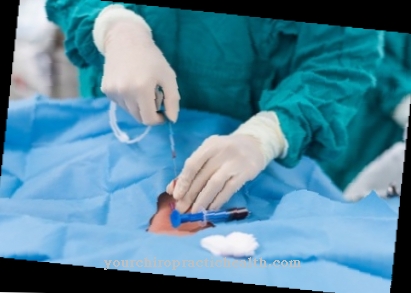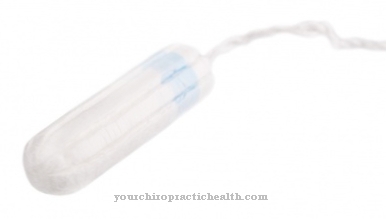Endoscopes serve the direct representation of human hollow organs and hollow bodies, which may be necessary in various medical fields for diagnostic and / or therapeutic purposes. Endoscopes enable minimally invasive interventions that are less stressful for those affected.
What is an endoscope?

A endoscope is a special thin (up to 14 mm diameter) and tubular instrument with the help of which hollow organs of the human organism, in particular the stomach and intestinal area, can be examined more closely and, if necessary, treated before a surgical procedure.
While endoscopes were previously used primarily for diagnostic purposes (endoscopy or mirroring), they are now increasingly used in minimally invasive interventions, which are associated with significantly less stress on the person concerned (endoscopic surgery).
Shapes, types & types
Depending on the specific application, there are different Endoscopes different structures and with different optical systems.
Rigid endoscopes, for example, have an optical system that is made up of successive lenses and prisms. Rigid endoscopes are used as a laparoscope (endoscopy of the abdominal cavity), rectoscope (endoscopy of the rectum), bronchoscope (endoscopy of the bronchi) or hysteroscope (endoscopy of the uterus). If the structures to be examined cannot be reached with a rigid endoscope, a flexible endoscope, a so-called fiber endoscope, whose optical system operates via fiber optic bundles that ensure higher brightness, is used.
Fiber endoscopes are used in particular for endoscopies of the uterus, urinary tract, fallopian tubes and blood vessels. With the help of a video endoscope (electronic endoscope), the images obtained during an endoscopy are displayed on a monitor. There is also the possibility of obtaining the required images via a small capsule equipped with a camera during their passage through the gastrointestinal tract, especially the small intestine (video capsule endoscopy).
Structure, function & mode of operation
To build a Endoscope Above all, an optical system (usually a camera) and a lighting device at the tip of the instrument that operates with cold light in order to avoid heat or heat-related damage to the structures to be examined or operated on.
In addition, conventional endoscopes have suction and irrigation systems as well as insertion channels for special instruments (including forceps for tissue removal, ultrasound probes for endosonography). With the help of the optical system that guides the light from the lighting system to the other end of the endoscope or to a monitor, the examined structures are made visible. Depending on the specific area of application, either rigid (rigid tube) or flexible endoscopes (flexible hose), which can be up to 2 m in length, are used.
In addition, with the help of a chromoendoscope, which marks the mucous membrane areas to be examined (including the esophagus, intestines) with a dye, pathological changes can be better visualized. This effect can additionally be reinforced by a zoom endoscope, through which the images to be assessed can be enlarged (up to 100 times). With video capsule endoscopy, a capsule is swallowed, which passes through the gastrointestinal tract and sends data to an external storage device for evaluation and is then simply excreted in the stool.
Medical & health benefits
Endoscopes are mainly used for diagnostic purposes and, in addition to their low complication rate, are highly informative. Endoscopic diagnostic procedures are used particularly in internal medicine (laparoscopy, gastroscopy), gynecology (endoscopy of the uterus, fallopian tubes, milk ducts), urology (urethroscopy, cystoscopy), orthopedics (arthroscopy) and in the ENT area (panendoscopy).
In addition, as part of an endoscopy with the help of forceps or a cytology brush, a biopsy can be taken for the histological detection of pathological changes from the tissue structures to be examined. In the case of a bronchoscopy, bronchial lavage (flushing with saline or Ringer's solution) can be performed immediately. In addition, endoscopes are increasingly used in the context of therapeutic measures. For this purpose, the instruments required in each case are guided into the area to be operated via insertion channels, whereby several endoscopes can be used for more complex interventions.
For example, esophageal stenoses (narrowing of the esophagus) can be widened with the help of an endoscope. In addition, stents (plastic or metal tubes) can be inserted to widen constrictions in the ducts of the salivary gland or gall bladder as part of an endoscopic procedure. Smaller polyps (e.g. in the large intestine) can also be removed with an endoscope, gall and bladder stones can be removed, and bleeding ulcers can be soothed with a laser. The gallbladder can also be removed in a minimally invasive manner with the aid of an endoscope, and knee osteoarthritis or an inguinal hernia can be treated.





.jpg)



















.jpg)


